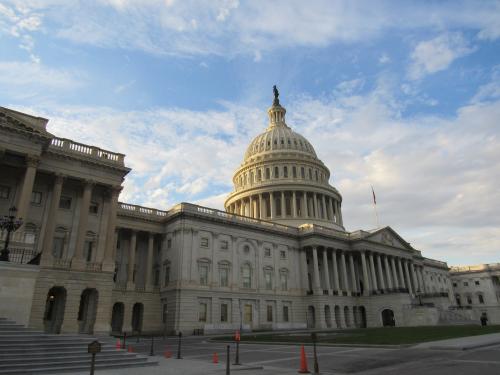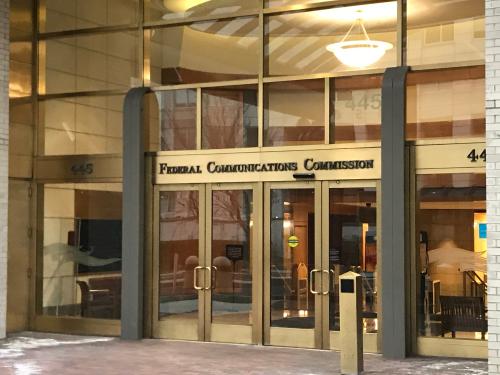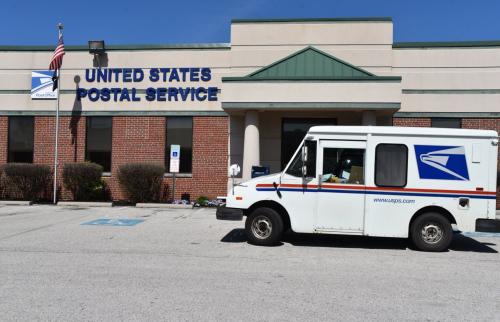In the new Senate infrastructure bill—the Infrastructure Investment and Jobs Act (IIJA)—Congress would make the largest federal investment into broadband in history. To do so, the Senate largely bypassed the Federal Communications Commission (FCC)—the federal agency historically charged with assuring universal access to and adoption of broadband—and instead gave the primary responsibility to the states, with the National Telecommunications and Information Administration (NTIA) providing oversight.
That does not mean, however, that the FCC has no role to play in helping achieve the Senate’s goals of universal broadband deployment and adoption. The law gives the FCC some specific tasks related to foundational objectives such as mapping and defining “reliable” broadband. But the FCC can do far more than its specifically mandated actions—assuring that through the IIJA, we finally have broadband networks everywhere, and everyone on them.
First, the FCC should immediately commence a Notice of Inquiry that enables stakeholders to debate (and the FCC to analyze) what COVID-19 taught us about the future of connectivity needs and how states should consider the trade-offs for determining what kind of networks to fund. One of the most important decisions states must make involves the performance standards of networks they will fund. Everyone agrees conceptually that networks should be “future-proof.” States, however, will face trade-offs in terms of costs and time to deploy.
Some stakeholders urged Congress to mandate fiber-only solutions by adopting a standard that the network provide at least a 100 megabits per second (Mbps) download and 100 Mbps upload service. Congress gave states flexibility, adopting a 100 Mbps download/20 Mbps upload service, which allows wireless services to qualify. Vendors will provide states with mountains of data urging different decisions, but states would benefit enormously from the analysis of the experts within the FCC as to the trade-offs related to market and technology trends.
Second, the FCC should survey whether there is a critical mass of states interested in using the reverse auction mechanism to allocate some of their funds to be distributed through a competitive grant program. The IIJA tasks states with solving the digital deployment gap through a “competitive grant” process, but Congress did not provide precise guidelines for such a process. One way to assure transparent competition is through a reverse auction. There is bipartisan concern about the most recent such auction, which the FCC itself admits needs to be “cleaned up.”
While some blame the mechanism, it can be argued that the Trump administration’s FCC created the mess by running an auction with bad maps and too limited due diligence about the bidders. Further, research demonstrates the auction mechanism can achieve efficiencies in utilizing deployment dollars.
Some states, particularly those without experience in awarding broadband grants, might prefer using an open auction process. The FCC should start discussions with states to determine whether there is a critical mass that, on a voluntary basis, wants to utilize FCC staff and software to allocate funds through the auction. Such a critical mass may not exist, and if so, little is lost. Alternatively, if states wish to do so, there is much to be gained.
Third, the FCC should add anchor institutions to the mapping process. In 1996, Congress determined that the universal service program should include providing robust connectivity to anchor institutions, including schools, libraries, and rural health care facilities. In the IIJA, the Senate mandates that connecting anchor institutions remains a priority. Congress has also mandated that the FCC improve its mapping efforts so that all stakeholders have a more accurate picture of what locations are, and are not, connected. Yet the current FCC mapping efforts do not include such institutions. To assure the maps serve the congressional mandate, the FCC should include them.
Fourth, the FCC should announce that it is postponing the second Rural Digital Opportunity Fund (RDOF) auction until the current congressional funding has run its course. The FCC is currently planning a second RDOF reverse auction, designed to fund deployments to unserved locations. That is the same mission for which Congress, in the IIJA and other legislation, is providing tens of billions of dollars. For the FCC to undertake that mission with a shifting map would be wasteful.
Fifth, the FCC should start a proceeding to lower the contribution factor to reflect congressional appropriations. The “contribution factor,” is the rate communications companies collect on certain communications services and transfer to the FCC to fund universal service programs. When FCC Chairman Ajit Pai took over in January 2017, the rate was 16.7%—barely an increase from the 16.1% four years earlier. Under Pai’s watch, the rate nearly doubled, reaching 31.8%, causing rate increases for virtually every American family.
The 2021 congressional appropriations will eventually cause a decrease, but there is no reason to wait for these once-in-a-generation appropriations to work through the system. The FCC should immediately start determining how the IIJA and other congressional funding will affect its universal service needs and lower the contribution factor.
Sixth, the FCC should accelerate the RDOF review process and detail staff with expertise in that process to the NTIA for its review of the state competitive grant plans. The IIJA requires the NTIA to oversee plans from 58 states and territories related to broadband deployments. They have limited staff to do so. The FCC, through the universal service mechanisms it has overseen, has staff familiar with the issues of funding enforceable commitments to build communications networks.
Some of that staff is currently evaluating the long-form applications of the RDOF winners. That process should be accelerated, with the staff then detailed to the NTIA to use their expertise for the IIJA grant program.
Seventh, the FCC should immediately commence a process for stakeholders to debate, and the FCC to resolve, how best to reform the universal service mandate. The IIJA requires the FCC to present a plan for the future of the commission’s universal service mandate within nine months of passage. Congress understood that while the nearly century-old goal for universal coverage and affordability of our communications infrastructure remains intact, we need an updated plan for what connections government should support and how to fund them. Congress gave the FCC limited time because it understood that while the appropriated dollars would cover much of universal service funding needs for the near term, a transition is necessary and will take the FCC at least several years to implement even if Congress agrees with its proposed course of action. The FCC should have started the process in 2018, but regrettably, Chairman Pai choose to sweep the problems under the rug, only mentioning it on his way out the door.
That past sluggishness compels aggressive action now. The FCC should begin the process immediately, sending a critical message to the institution of the priority of reform as well as signaling to Congress that it understands the urgency.
There are other proceedings that the FCC should quickly commence to serve its own public purpose at this time. For example, in response to the COVID-19 pandemic, the FCC and the Centers for Disease Control and Prevention should run a joint process to provide recommendations to Congress and the administration on how to assure that in the next public health crisis, accurate and life-saving information can drown out the noise of deadly misinformation. Another key issue is cybersecurity, where the FCC should play a more useful role—following up, for example, with the meeting President Joe Biden will be having with industry leaders on the issue on August 25.
But the FCC’s most pressing tasks, as discussed here, are those that improve the odds that the goals of the IIJA and other congressional appropriations are achieved.
The Brookings Institution is committed to quality, independence, and impact.
We are supported by a diverse array of funders. In line with our values and policies, each Brookings publication represents the sole views of its author(s).






Commentary
Seven steps the FCC should take on broadband in response to the infrastructure bill
August 16, 2021